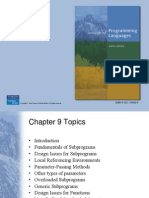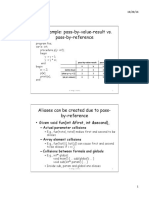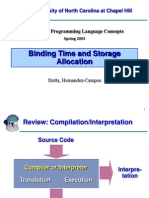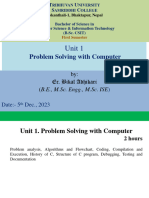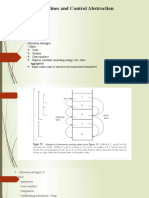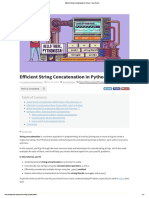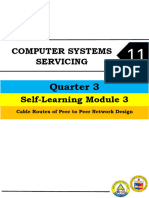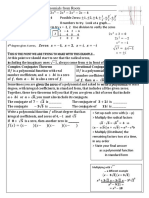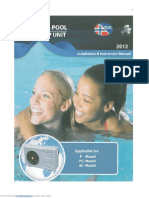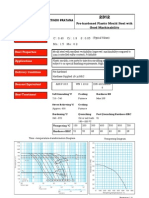0% found this document useful (0 votes)
6 views27 pagesChapter8 Subroutines PP
Chapter 9 discusses subroutines and control abstraction in programming languages, emphasizing the importance of abstraction in reducing complexity and facilitating efficient software design. It covers topics such as memory layout, calling sequences, parameter passing methods, exception handling, coroutines, and event types. The chapter highlights how subroutines serve as key building blocks for control abstractions and the various techniques for managing parameters and exceptions in programming.
Uploaded by
sadam.husenCopyright
© © All Rights Reserved
We take content rights seriously. If you suspect this is your content, claim it here.
Available Formats
Download as PDF, TXT or read online on Scribd
0% found this document useful (0 votes)
6 views27 pagesChapter8 Subroutines PP
Chapter 9 discusses subroutines and control abstraction in programming languages, emphasizing the importance of abstraction in reducing complexity and facilitating efficient software design. It covers topics such as memory layout, calling sequences, parameter passing methods, exception handling, coroutines, and event types. The chapter highlights how subroutines serve as key building blocks for control abstractions and the various techniques for managing parameters and exceptions in programming.
Uploaded by
sadam.husenCopyright
© © All Rights Reserved
We take content rights seriously. If you suspect this is your content, claim it here.
Available Formats
Download as PDF, TXT or read online on Scribd
/ 27




